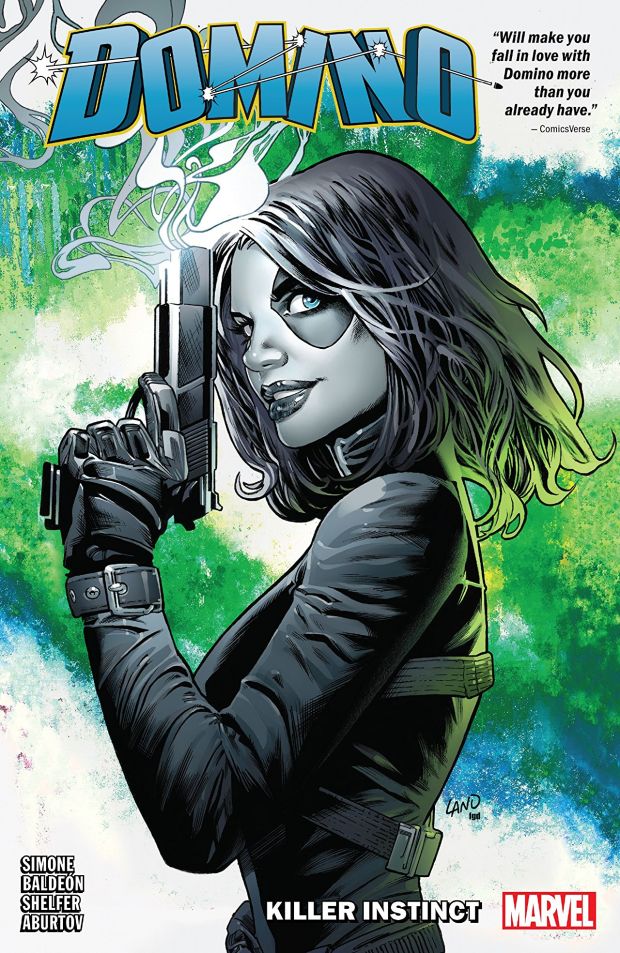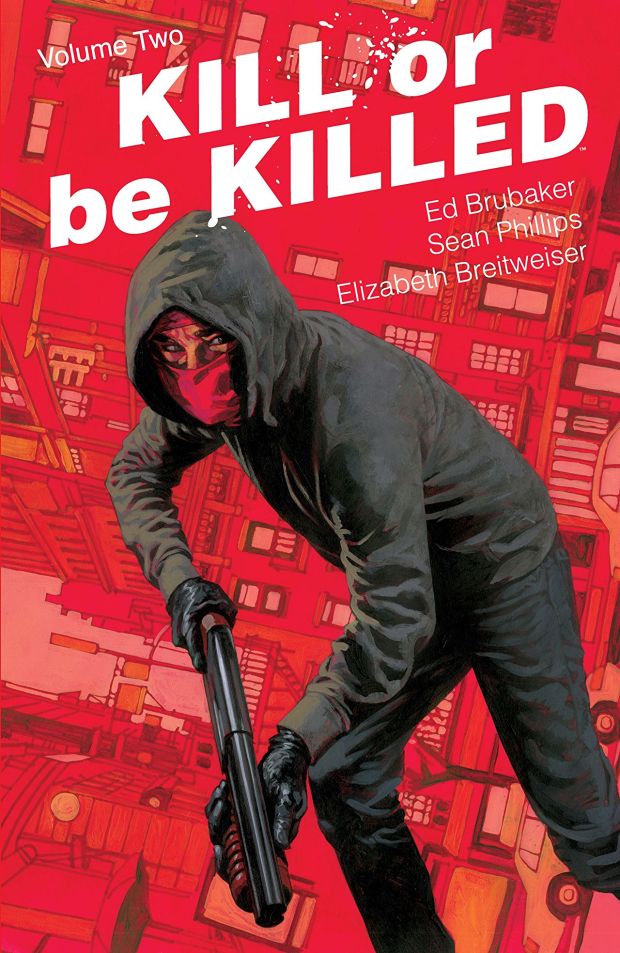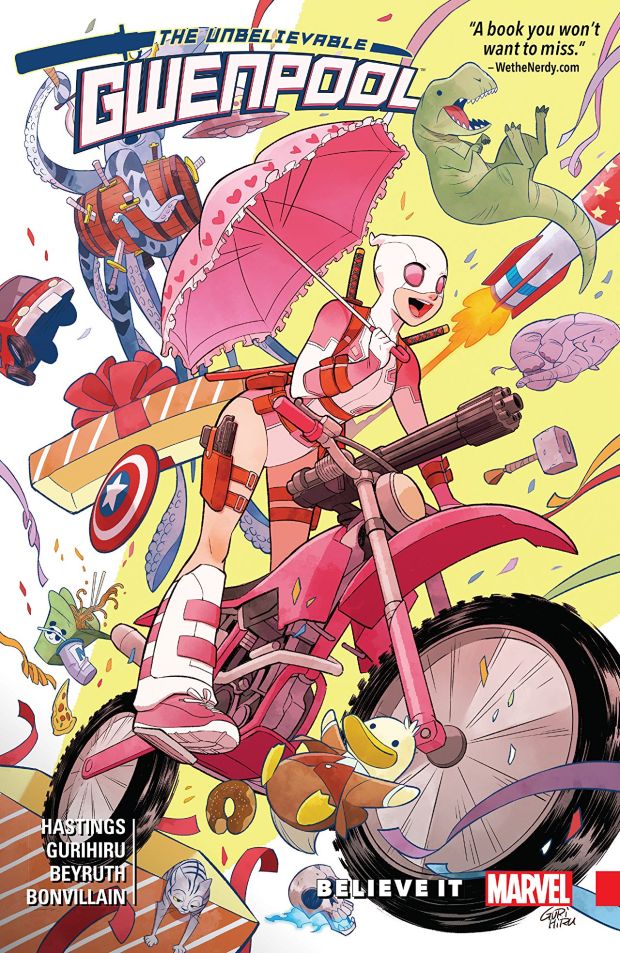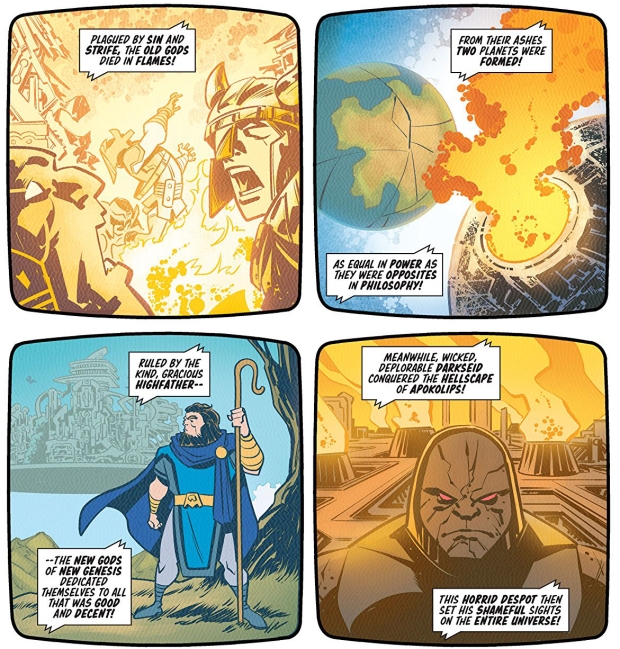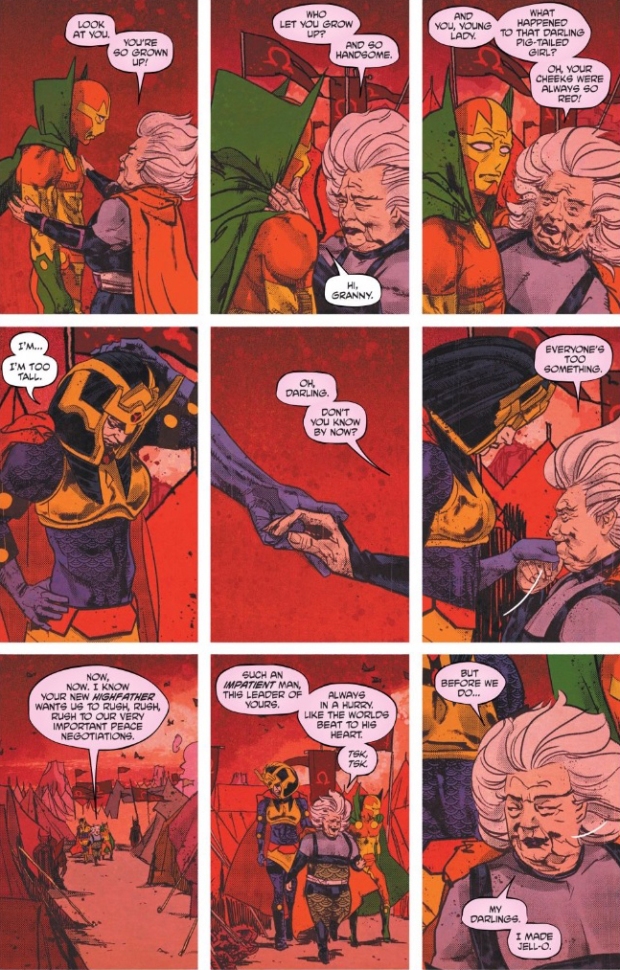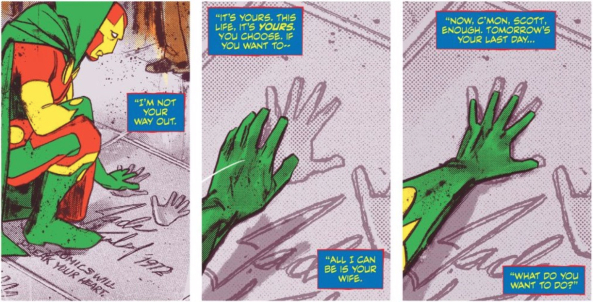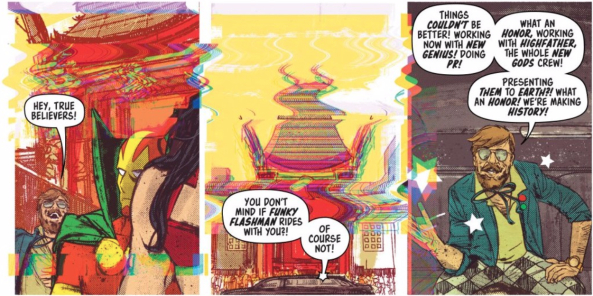by Gail Simone, David Baldeón, Michael Shelfer, and Jesus Aburtov
collects Domino #1-6
volume one | two |three – complete
I absolutely loved this! Domino has everything going for her in this six-issue arc, which I recommend not only for fans of Deadpool 2, but anyone who likes a kickass woman with a dark past and awesome power, a solid mutant (but non-X-Men) story, heaps of witty humor, and bug eyed pugs.
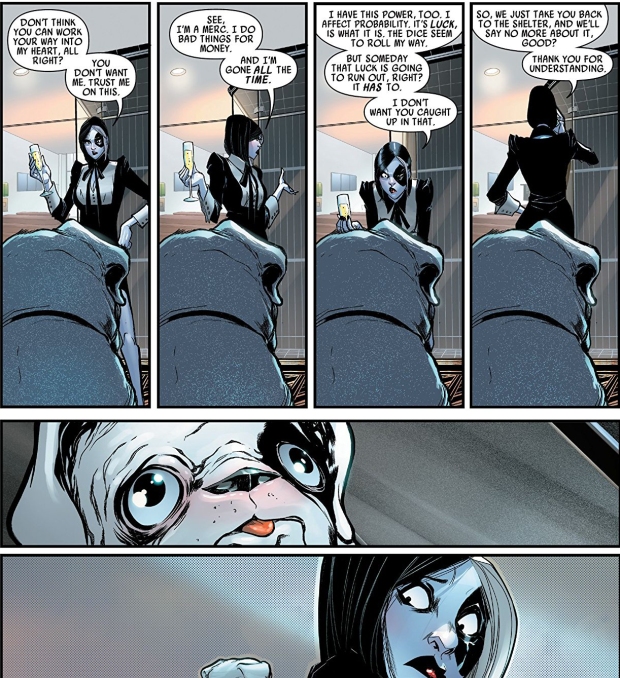
No offense to all dog lovers everywhere (I’m one myself), but if Domino’s gone all the time and needs an animal with innate luck…. maybe Outlaw should have given her a cat?
Domino’s luck powers just might have been at work here, because who better to write her than Gail Simone! I mean, there are lots of awesome female writers, but Domino (aka Neena Thurman) is such a natural character for Simone, you could probably convince someone that she created Domino herself. The elements of Domino’s abusive past and her dark character; her all-female team and relationships with Outlaw and Diamondback; the sarcastic and witty humor – it all felt like the best of Secret Six, Birds of Prey, and Deadpool, and by the way, does anything feel more right than Gail Simone writing Deadpool again?
Maybe Simone writing Outlaw. Simone is a master of memorable secondary or minor characters with big doses of personality – King Shark and Ragdoll from Secret Six, Misfit and Barda from Birds, Alysia from Batgirl, and Maizy in Crosswind. Outlaw is one of Simone’s best original characters, whom she created in her Deadpool series. Outlaw’s a mercenary who leans hard into the cowgirl routine, but it absolutely works for her, as does her fierce BFF love of Domino. Diamondback had a little less of a strong personality but she was still great, and I have no doubt we’ll see more of them in the next volume.
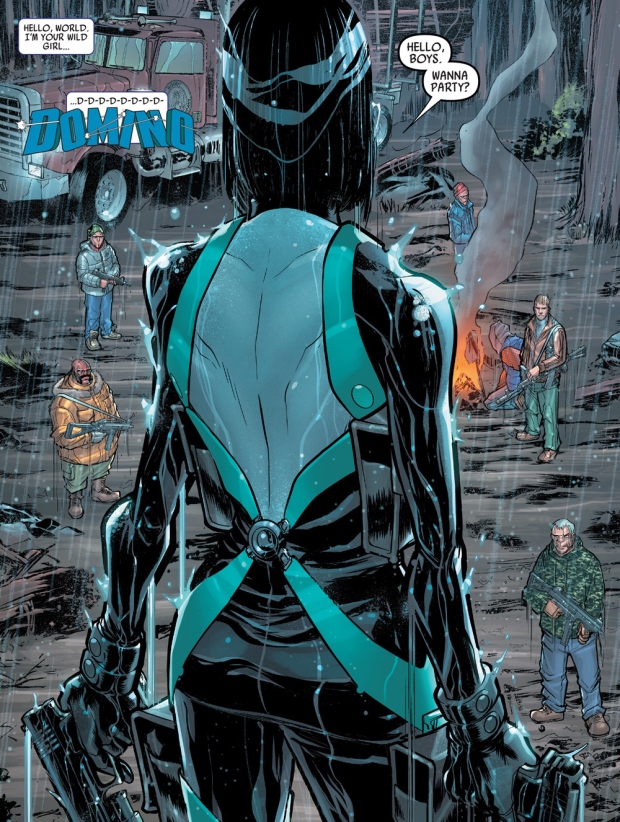
Cherrybomb is the perfect theme song for Domino, end of sentence.
The Domino of the comics is very different than her film adaptation, so have that expectation going in. But you don’t need an encyclopedic knowledge of her history: Simone highlights Domino’s backstory without spending too much time in exposition, and also establishes her team with Outlaw and Diamondback, who are just so, so much fun together.
The story grounds itself in Domino better understanding and controlling her abilities – which she describes as a mouse walking along her spine, cringingly perfect. The power of luck translated very well onto the big screen, but it also made Domino seem invincible. Not so here – we see Domino’s powers taken away from her, and even on contagious overdrive (not great in a casino), often threatening her and her friend’s lives. Connecting her abilities to her focus and emotions allowed for a lot of great character growth without relying too much on her powers for a perfect ending. Domino’s villains are also connected to her powers and her awful childhood, and Simone does an excellent job of pacing with flashbacks, the Topaz reveal, and their violent, very satisfying final confrontation.
minor spoilers. I only wish Domino was also able to interact with Desmond, especially with their connection – which seems pretty unique along the spectrum of mutant powers. How often is one mutant’s powers directly affected by another? It was a little disappointing that Domino only learned about Desmond through Topaz, but at the same time, it also heightens the tragedy that they never met each other but had a huge impact on the other’s life. It also makes perfect sense that, had she met Desmond, Domino might have been emotionally crippled by the guilt of it and walked away from her life entirely.
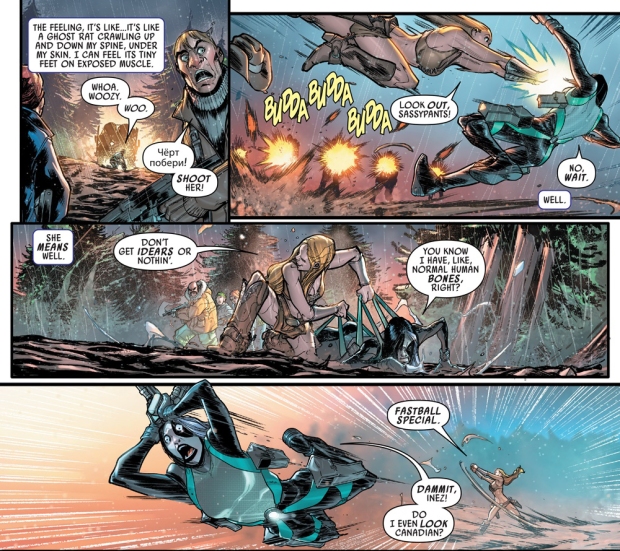
Baldeón’s fantastic art is cartoony and very expressive – very often it allowed for scenes full of movement, action and comedy that worked well alongside Simone’s writing (see some great examples of this above). He pays great attention to detail too. Other times it felt like a little much, especially with some of the darker material. I was also sort of disappointed that Domino is attacked and pushed through a window while in her underwear, and Simone/Baldeón chose to do a full spread page of…Neena fully spread…with an angle that I thought we had firmly left behind in comics. Shelfer was a guest artist for issue #5 and it was my least favorite art in the book – he lacked the movement and creative angles that made a big fight scene feel slower and less climactic.

Speaking of which, I was pleasantly surprised that there was also a romantic element to Domino’s story, and I 100% wanted more of it. I won’t spoil who the lucky person is – somehow I’d completely missed him in comics but apparently he’s been around since the 70’s and is getting his own MCU movie too! However, the romance moved too quickly for me to be completely convinced (not necessarily from Domino’s side, but the guy’s feelings seemed rather fast) – and only afterwards do they suddenly become more comfortable with “master” and “pupil” titles, which is…weird? Maybe it was all meant in a Simone-y bantering tone and I just read it wrong. Regardless, it was giving me serious Catman/Huntress feels (damn you Simone with your amazing but ill fated couple pairings!!) and I hope we see those two cross paths again.
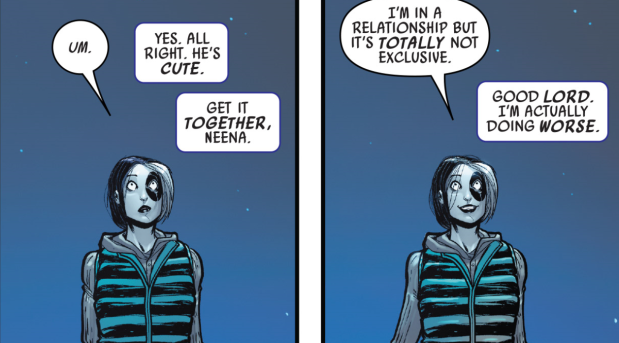
I am thrilled that Domino has received all the praise it deserves, and that luck strikes again for her and all of us – not only is volume 2 of Domino being released this month, but Simone and Baldeón are also beginning an all-new Hotshots series, an all-female featuring Domino, Outlaw, Diamondback and others.
